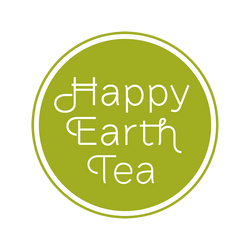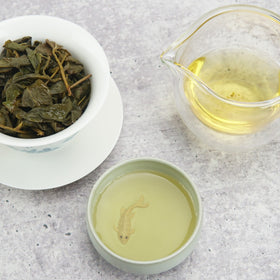
Presenting Tea at Shimmering Light
Every time I heard the mention of Shimmering Light Farm, a place located south of Rochester, NY by Canandaigua Lake, it had conjured up images of wholesome, healing activities. I was, therefore, excited when I got invited to give a presentation on tea at the farm.
Driving through the wintery landscape of upstate NY, on a sunny day, when there is not too much snow on the ground, is quite enjoyable. Actually, it is positively uplifting, especially on seeing those rolling hills.
When I pulled into the farm, two Sundays ago after having driven through the country for 40 minutes, I was already feeling extra cheery. My friend Kay and Deb, the owner of the farm, were there to meet me and help set up. I was surprised to meet Deb. I was expecting to see a woman in overalls. Instead here she was, an urbane woman who could well be an editor in a publishing house.
Turns out Deb did leave behind corporate America not too long ago. She bought Shimmering Light in 2001 and has since been working to turn the place into a wellness center. They hold many interesting events year round at the farm. If you reside in the area and are into wholesome living and healing, you must visit them.

I began the presentation with the “three seasons” of tea. It is revealing for many that the taste of tea can vary by season. Nowhere, I think, is this variance more dramatic than in the teas of Darjeeling and Nepal. We started with a first flush (spring harvest) from Muscatel Valley, Darjeeling. The light floral, grassy and brisk notes of the tea contrasted hugely with the dark, fruity and sweet second flush (summer harvest), Himalayan Imperial Black from Jun Chiyabari, Nepal. You could see their eyes pop open in wonder, and smiles telling of a happy discovery!
Then I steeped the Autumn Bouquet from Jun Chiyabari. As we picked up notes of hay and nuts, and a sweetness very different than the sweetness found in the first two teas, people were once again amazed by how different all three teas tasted!

I think one of the reasons why people are amazed by the discovery that seasons matter so much for tea is that because it is not the case with any other beverage. At least not to the extent where the whole production is categorized according to the seasons. I mean, I have customers who describe themselves as a “first flush kind of person” or a “second flush kind of person.” But mostly people are shocked because the connection seems obvious once they realize it.

Next I went through an abridged version of gong fu style of preparing tea. We did Alishan Qingxin (unroasted) and Winter Concubine (roasted) oolongs from Taiwan using a gaiwan and yixing pot. It’s fun to see people trying to place the floral fragrance of Qingxin, which is always evocative, but elusive when you try to describe it! Participants were amazed to see the leaves still looking fresh and juicy even after repeated steeps.

The sweet fruitiness of the Winter Concubine was greatly enjoyed. This tea I prepared in my favorite gaiwan. The balance of flavors in the tea is exceptional and it appeared to me that the guests were able to acknowledge that.
One of the guests was Chris. He owned the adjacent farm where I was told he raised goats. I immediately thought of the “cool” story I had heard about folks who raise goats which then they take places that need grazing to “rehabilitate” the grasslands. I asked him if he was herding those goats. Silly me. Well, it was even more embarrassing at the end of the presentation, when I discovered he was actually an award winning urban forestry expert with a Phd. After all that "happy tea" I am hopeful Dr. Chris forgave me.

Dr. Chris had many questions about the tea manufacturing processes, which I was happy to answer. Also I was excited to discover from Deb that they have been making herbal teas at the farm. We exchanged some interesting notes on her techniques and tea making. By the way, they also grow veggies and fruits at the farm which they distribute through a CSA. I also learned about inspiring efforts of the local farm owners to protect land from commercial development in the area by donating it to a land trust.
I dedicated the final part of the presentation to ceremonial matcha. There was much interest around this tea. I am really proud that we have finally been able to source a ceremonial grade matcha with an Organic certification. There are many exceptional ceremonial matchas out there. Sadly, only a few are Organic. The latter, as you know, is important to us. Not just the taste.

Making and sharing tea in the beautiful environment of Shimmering Light was nothing short of a blessing. And I once again sincerely thank the organizers and the participants for the experience.
NB: Images courtesy, Shimmering Light Farm.



Leave a comment